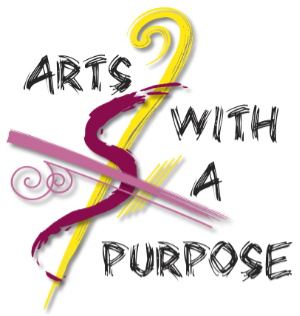Why It Matters
People commonly value the arts as entertaining, informative, and inspiring, but now more than ever we understand they are a necessity for quality of life and wellbeing not only for individuals but society as a whole. Whether serving as the means to deflect and transform possible negative outcomes into positive possibilities or simply as a catalyst to create positive change, arts activities improve discipline, focus, participation, confidence, and self esteem. An arts experience engages critical thinking skills and emotional intelligences that promote individual wellness, social awareness, inclusion, and compassion. – Cathy Morris, Executive Director, Founder, Arts With A Purpose
“We have the opportunity the minute a student enters a room to engage brains while regulating the stress response systems creating a present moment experience. Many children and adolescents carrying in adversity and trauma struggle with processing, organizing and expressing incoming stimulation which can impede higher cognitive learning! When we activate the right hemisphere through sensations, movement, art, music, connection and play, we help our students to regulate negative emotions, feel connected and integrate left and right hemisphere where connections between verbal and nonverbal communication strengthen.” – Lori Desautels, Educational Neuroscience/ Brain and Adversity
“Arts therapies and similar approaches play an important supporting role in addressing both the aftermath of violence and are a form of prevention of violent behavior in children, adolescents and adults. When I speak of arts therapy in this sense I am not talking about a workbook of instant interventions, a few drawings or expressive activities. I am talking about how a deeper and meaningful engagement in art expression can profoundly make a difference. We now have evidence of this from many sources including white papers by the National Endowment for the Arts, data from prevention programs and conflict resolution within juvenile justice systems and emerging research on military veterans who report that art expression reduces feelings of anger, hopelessness and depression”. – Cathy Malchiodi, PhD, LPCC, LPAT, ATR-BC
FACTS
- The arts have long been recognized for their power to bridge differences – connecting individuals of different backgrounds and experiences through the shared experience of art, music, literature and dance, thus healing communities as well as individuals.
- In recent years there has been increased interest in the relationship between the creative arts and their effects on physical and mental health, emotions, stress, attitudes and beliefs.
- More than three hundred professional organizations are researching, documenting, and systematizing how engagement with the creative processes impacts emotional and physical responses.

- There is a similar focus within the arts community. Often based on their personal experience with special populations, musicians, painters, dancers, sculptors, writers, and arts educators have also realized the power of the creative process to heal body and mind and promote positive concepts and approaches to life.
There is much that can be done, and now is the time to do it!
Show your support and BECOME A SPONSOR!
Direct your financial support with a credit card or PayPal

